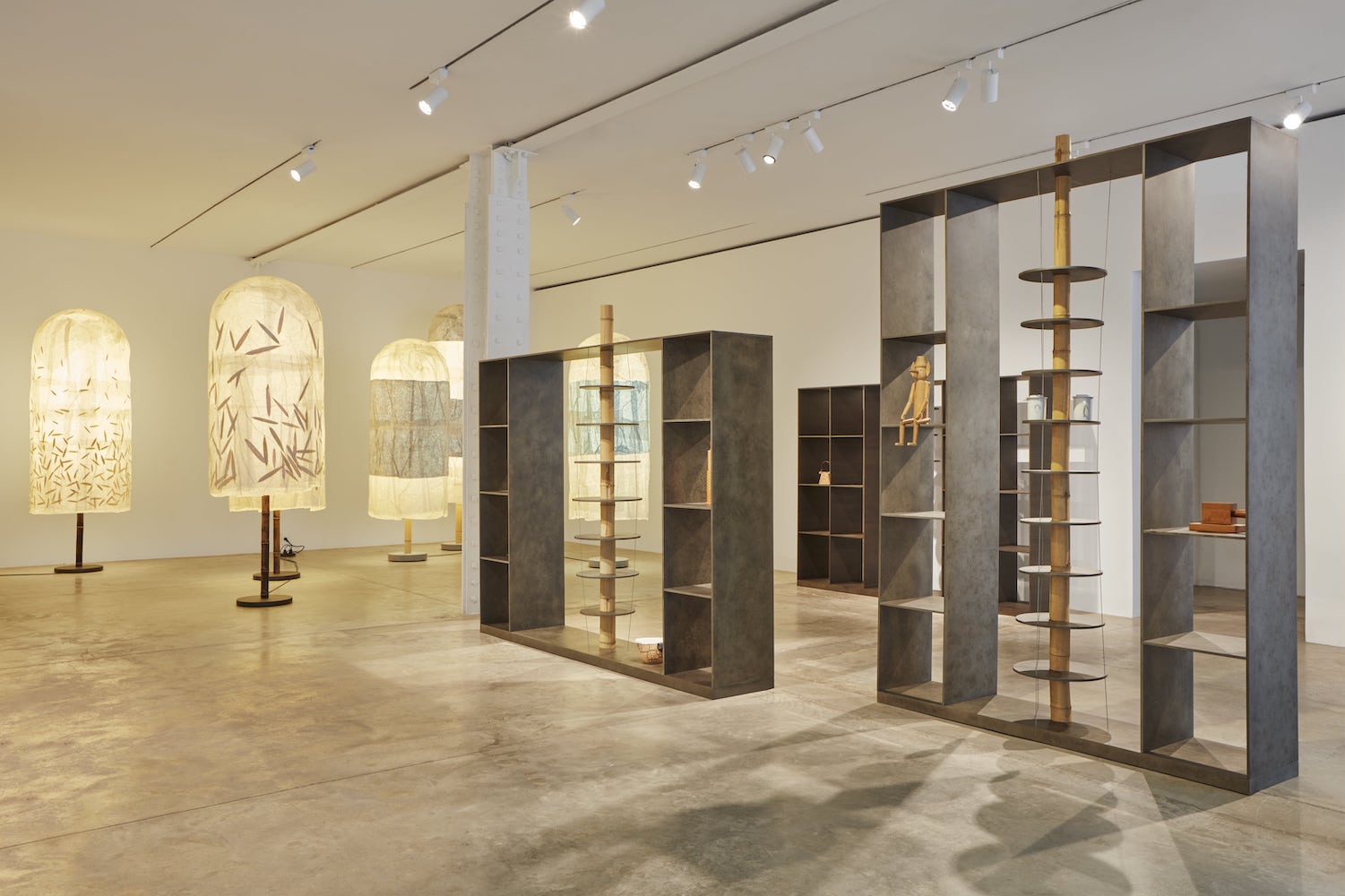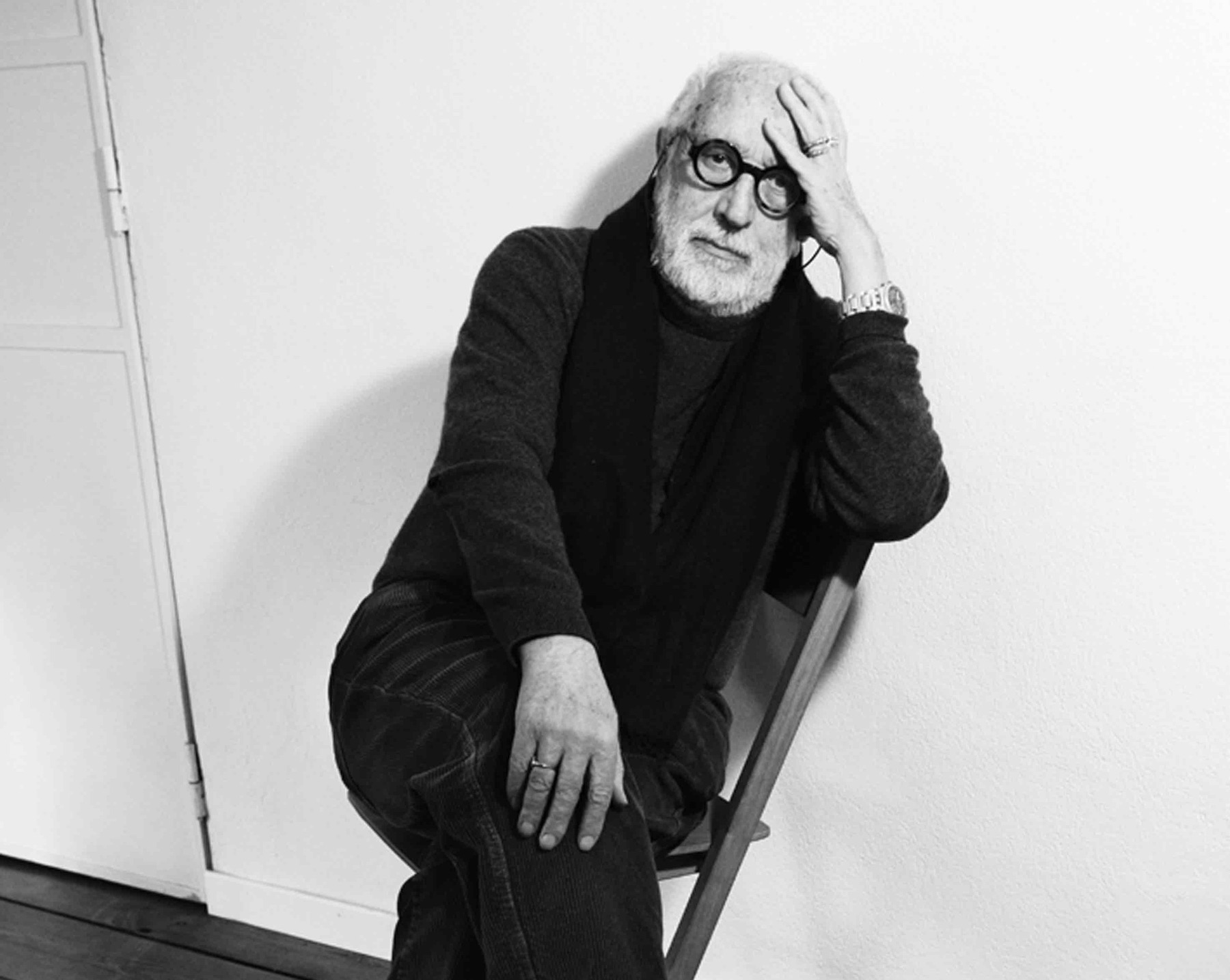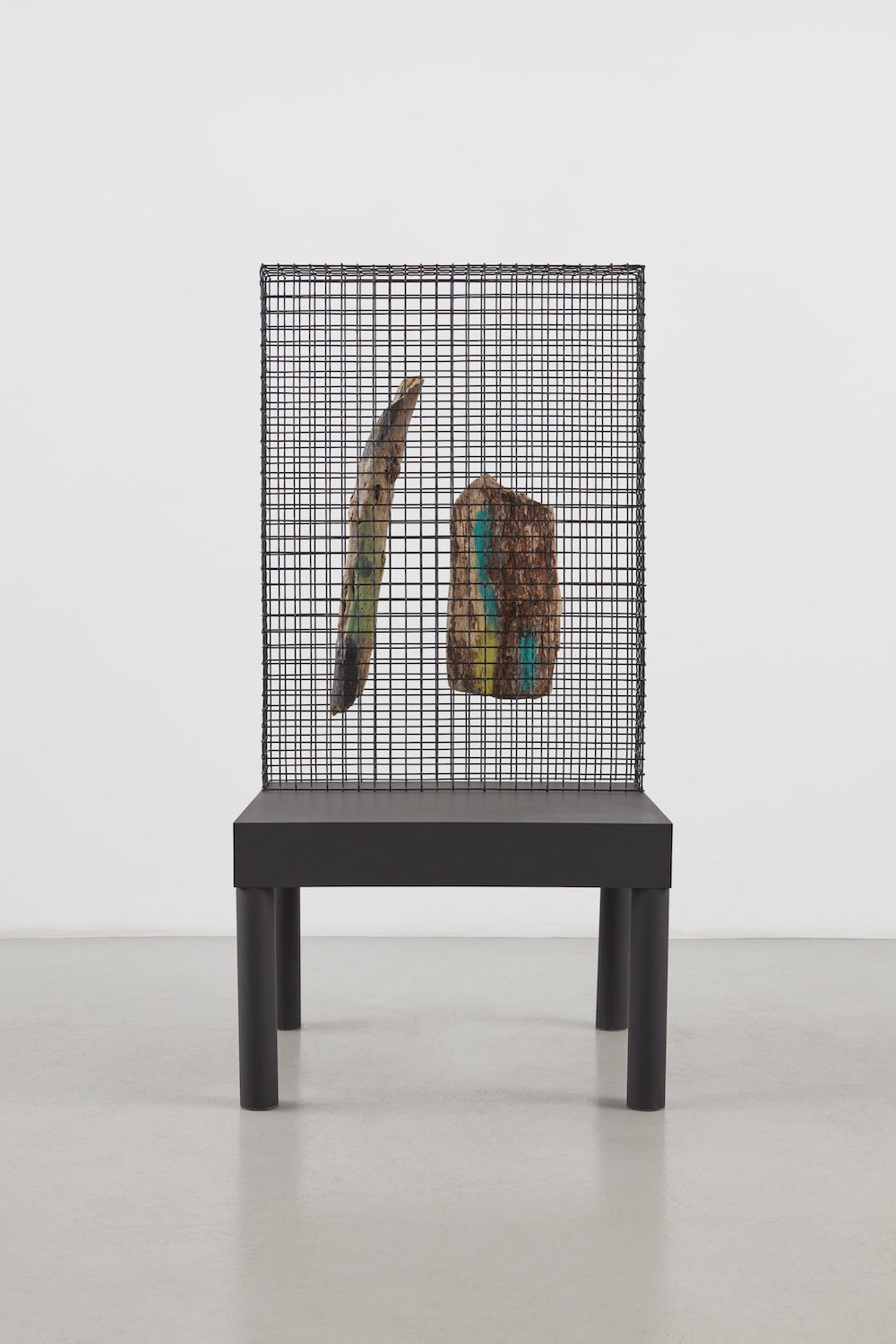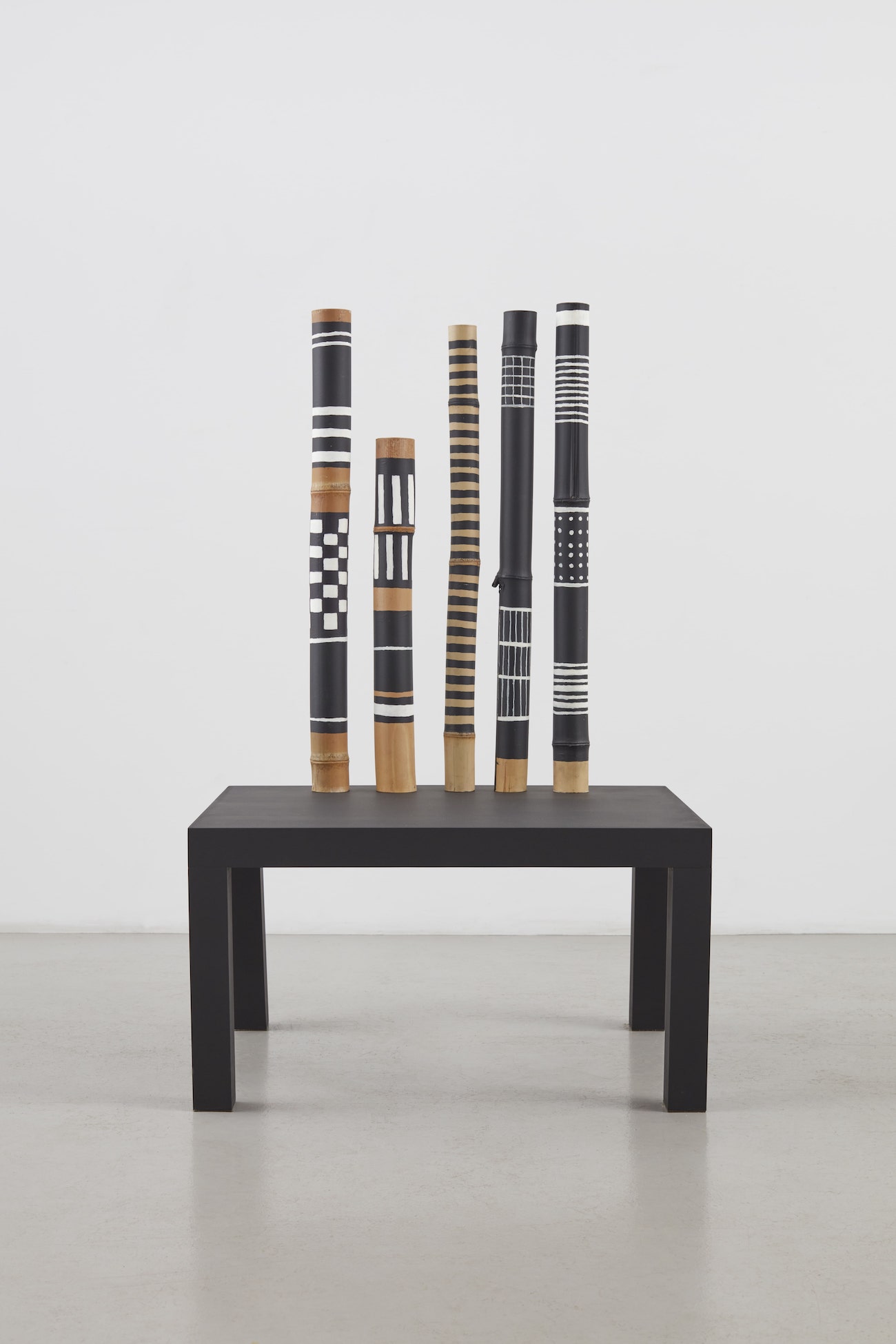Andrea Branzi’s “Contemporary DNA” at Friedman Benda
Andrea Branzi’s spring exhibition at Friedman Benda in New York, “Contemporary DNA,” included furniture and objects that showcased what he calls a hybrid nature. Painted bamboo backing rigid seats and shelves, leaves floating on oversized paper lampshades, and driftwood framed by a metal cage exemplify the Italian architect and designer’s interest in connecting craft and industrial production.

Installation view of “Andrea Branzi: Contemporary DNA” (March 2—April 22, 2023) at Friedman Benda in New York, photo by Timothy Doyon, courtesy of Friedman Benda and Andrea Branzi.
Branzi can also be described as a philosopher, who sees the driftwood used in his series “Roots” as “noble memories of ancient storms,” or the bamboo in his “Buildings” shelving units or “Germinal Seats” chairs as “forests of poetic thoughts,” like the pipe organs in houses of worship.
Driven by the seemingly useless objects we hold dear because of their ability to contain our story—our memories, our loves, our sorrows—Branzi shared with Whitewall his thought process behind saving the world from its contemporary ugliness.
WHITEWALL: “Contemporary DNA” brings together four bodies of work: “Roots,” “Germinal Seats,” “Buildings,” and “Lamps.” For you, what connects these series? And how do they speak to this idea of contemporary DNA?
ANDRE BRANZI: When I design, I don’t question myself about the exhibition or the overall meaning of the works. I’m interested in separate experiences that, at the end, find an overall connection.
WW: We see the material bamboo used in disparate ways—as the post for the lamps, as the backs of chairs and branches, or punctuating the shelves. What drew you to the material bamboo initially?
AB: I have focused on bamboo, a material that could look like an industrial product, but that follows the rules of nature; a base that I have hand-decorated with colors. The outcome is a kind of hybrid nature. Bamboos grow endlessly, straight as spindles, useless as religious thoughts; their perfect forests are poetic thoughts, harmonious sounds of flutes, or organ pipes in cathedrals.
“Architecture belongs to thought; organized, yet indifferent to the world.”

Andrea Branzi, portrait by Francesco Brigida, courtesy of Friedman Benda and Andrea Branzi.
WW: Can you tell us about the inspiration behind the painted colors and patterns on the bamboo in the “Germinal Seats” series?
AB: The painted bamboos are part of a history, as if they were born from historical territories.
WW: How did you want the bamboo backs of the chairs and benches to be in dialogue with their seat and legs?
AB: They represent a hybrid connection between craft production and industrial production.
WW: How did you arrive at the objects caged in the backs of “Roots”? What do these objects represent for you? What do their painted surfaces symbolize for you?
AB: In “Roots” I have collected natural materials left by the sea on the beach, and later I decorated them as precious objects inside a metal cage. Roots are found elements that reveal their past. The paintings are meant as natural signs produced by my wish for knowledge.
WW: Why encage them?
AB: Russian poet and Nobel laureate Joseph Brodsky has explained that the collapse of contemporary societies comes from the ugliness of what we have built. It is for this reason that today we protect the roots of our aesthetics in cages.
Sticks abandoned by the sea and rivers are now preserved as relics of an ancient civilization—noble memories of distant storms. Overcoming the limits of technologies and professions, we consecrate ancient trunks and barks that will never reproduce. Infinitely different series, marked by unpredictable colors and grotesque objects, they save the world from the infinite ugliness of that which exists.

Andrea Branzi, “Roots,” 2022, Metal mesh, hand painted wood, painted aluminum, 60.25 x 32 x 26 inches, Unique, from a series of 12; photo by Timothy Doyon, courtesy of Friedman Benda and Andrea Branzi.
WW: What was the starting point for the “Buildings” series? What materials were you drawn to, and what do you imagine being placed on the shelves? What would you place on them in your own home?
AB: Buildings are works belonging both to the language of architecture and of the domestic environment. Architecture belongs to thought; organized, yet indifferent to the world. These shelves do not find their identity in a rational function, in the sense that they do not organize empty space. As Kevin Lynch said, architecture is no longer at the center of the urban space; it is composed of mnemonic tunnels, as “Buildings” are of plates, books, bottles, pots.
Each element occupies an apparent order; a human memory that in reality leaves no definitive traces, but only the imprint of various absences. These seemingly useless objects are the ones that interest me the most—a history of humanity and its civilization, of family, of loves, of their imprint.
WW: The shape and scale of the lamps on view is so striking. Can you tell us how you arrived at it?
AB: I have realized these big light volumes to capture the light and filter it through paper and leaves.
WW: You see objects as more than just tools, existing for more than simply their function. What is that “something more” objects—in particular, these objects—represent?
AB: The chance to have an emotional relationship with them.

Installation view of “Andrea Branzi: Contemporary DNA” (March 2—April 22, 2023) at Friedman Benda in New York, photo by Timothy Doyon, courtesy of Friedman Benda and Andrea Branzi.

Andrea Branzi, “Germinal Seat,” 2022, hand painted bamboo, painted aluminum, 51.25 x 31.5 x 23.75 inches, unique, from a series of 12, photo by Timothy Doyon, courtesy of Friedman Benda and Andrea Branzi.








